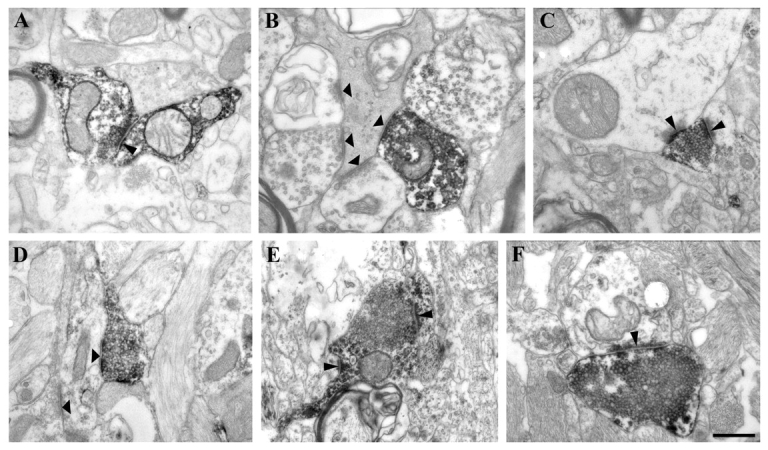Figure 5.

High-power electron micrographs from epileptic non-sclerotic (A, B and C) and sclerotic (D, E and F) CA1 region. Calretinin-positive terminals establishing symmetric synaptic contacts on calretinin-immunostained dendrites are less frequent in the epileptic tissues (A, thin arrowhead). They mainly target unlabelled interneuron dendrites both in non-sclerotic and sclerotic cases (B and D, thick arrowheads). (B) A degenerating interneuron dendrite still receives several symmetric synaptic contacts, one from a calretinin-positive and three from unlabelled interneurons (thick arrowheads). (C) A calretinin-positive terminal from the stratum lacunosum-moleculare establishes asymmetric synaptic contacts on an unstained interneuron dendrite and on a spine (thin arrowheads). In sclerotic tissues, the most frequent targets of calretinin-positive interneurons are also unlabelled interneuron dendrites (D, thick arrowheads). The ratio of calretinin-positive terminals give asymmetric synaptic contacts is increased in epilepsy. (E and F) Calretinin-positive terminals give asymmetric synaptic contacts on a calretinin-positive dendrite, on a spine (E) and on an unstained interneuron dendrite (F). Scale bar = 0.5 µm.
